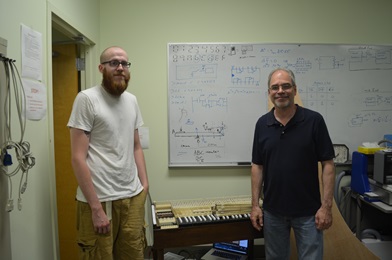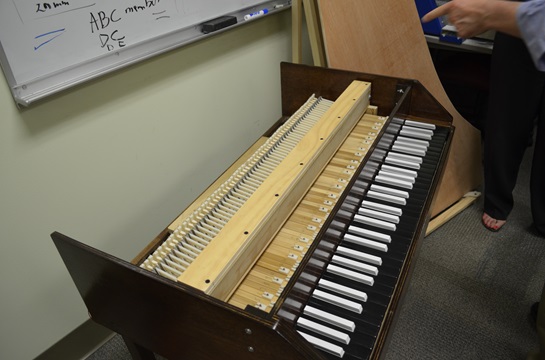When imagining Mozart’s piano, it’s easy to picture a large, imposing object rife with a sort of majesty-- opulence, even. The reality of the fortepiano, the instrument Mozart actually played on that served as the precursor to the modern piano, is anything but. It is shorter, lighter, and narrower than even a modern baby grand, and looks like a miniature, black-keyed piano.

Regardless of its small stature, the fortepiano holds an important place in the history of the piano itself. In the lab of Warren Rosen, Ph.D., it also holds the place of being the subject of the unique senior design project of Brett Davis, Michael Cassidy and Bruno Diallo of the Engineering Technology Department.
Through the use of 3D printing technology, modern electronics, and advanced signal processing, the students were able to build an exact replica of Mozart’s instrument of choice with some modern updates that almost perfectly replicated the sound and feel of a fortepiano from 1795.
The all-wood construction of the original fortepiano lends to it often going out of tune—in Mozart’s day, it was not uncommon for a pianist to have to re-tune mid-performance!—which presented a challenge to the senior design group. How could a true-to-design fortepiano be built so that it wouldn’t go out of tune so easily?
The answer lies with an electronic and wood soundboard that replicates the sounds of the fortepiano depending on how hard a player hits its keys. This meant, also, that this particular piece would not be all-wood; instead, 3D printing would lend itself to a cheaper replica (reproductions of period fortepianos can cost up to $60,000) that will never go out of tune.

The inspiration behind the whole endeavor came from a recent concert that Rosen had seen where musicians played on early versions of modern-day instruments—including the fortepiano. This inspired the design project dedicated to replicating to the sound and feel (fortepiano keys strike shallower, and are lighter than modern keys) of Mozart’s fortepiano.
According to Rosen, "This was the neatest senior design project I ever did." It’s quite easy to see, and hear, why.